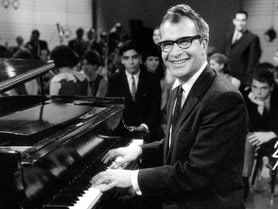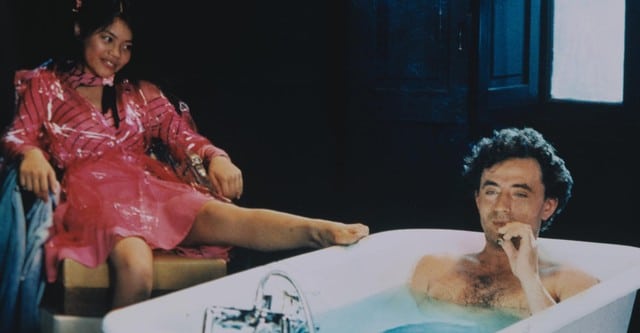Ruth Leon recommends… Take Five – Dave Brubeck Quartet
Ruth Leon recommendsTake Five – Dave Brubeck Quartet
Do you remember how surprising this music was in 1959 when we first heard it? Non-musicians played the recording over and over again to try to work out what was so unusual about it. We knew we liked it, we knew the bloke on the piano had something special, we knew it was different from all the other straight-ahead jazz music that was coming out in the 50s? but how?
For those of you who do not know, (but are still wondering) this piece has a time signature of 5/4 – 5 beats to every measure (quarter notes get 1 beat), instead of the usual 4/4 time or 4 beats to every measure. Most Western music is written in 4/4 time. If you count along with the song you’ll find it quite interesting – but you gotta be quick! 1-2-3-4-5, 1-2-3-4-5 etc. Place emphasis on beat 1. Even professional pianists found it extremely difficult to play in 5/4 time because they were so used to 4/4.
Dave Brubeck was famous for writing/playing in odd time signatures. While his name is most often associated with Take Five, it was actually his sax player, Paul Desmond, who composed it. It was the third track on Brubeck’s most famous album Time Out. This is, as you might surmise from thevisual quality, the original video.






Brilliant. This makes this site so good. Music. Thank you.
“Do you remember” when you heard it in 1959? Well, not all your readers are over 70, Ruth.
Given Dave Brubeck’s classical schooling, it is lamentable that he did not go on a more avant-garde direction (his music is entertainment; let us say high-quality entertainment). Note that other jazz musicians in the 1950’s were also composing (for jazz) less conventional music with great results: check Charles Mingus, or Thelonius Monk.
I take the opportunity to refer to a really impressive achievement in avant-garde jazz: Alexander von Schlippenbach and his improvisations with 12-tone music:
https://www.intaktrec.ch/115-a.htm
Sadly, although he was (unaccountably) quite popular, Brubeck managed to miss the point altogether. Tricky time signatures were just a silly gimmick, the best jazz uses 4/4 and occasionally 3/4, because it gives you the freedom to vary note placement to generate swing. And swing was something poor Brubeck never managed.
“The best jazz uses 4/4 and occasionally 3/4, because it gives you the freedom to vary note placement to generate swing.” I beg to disagree…there are actually many examples of swinging improvisational recordings in odd meters; it just depends on the skill of the artist. Check out some of Mehldau’s forays for example, or Joshua Redman.